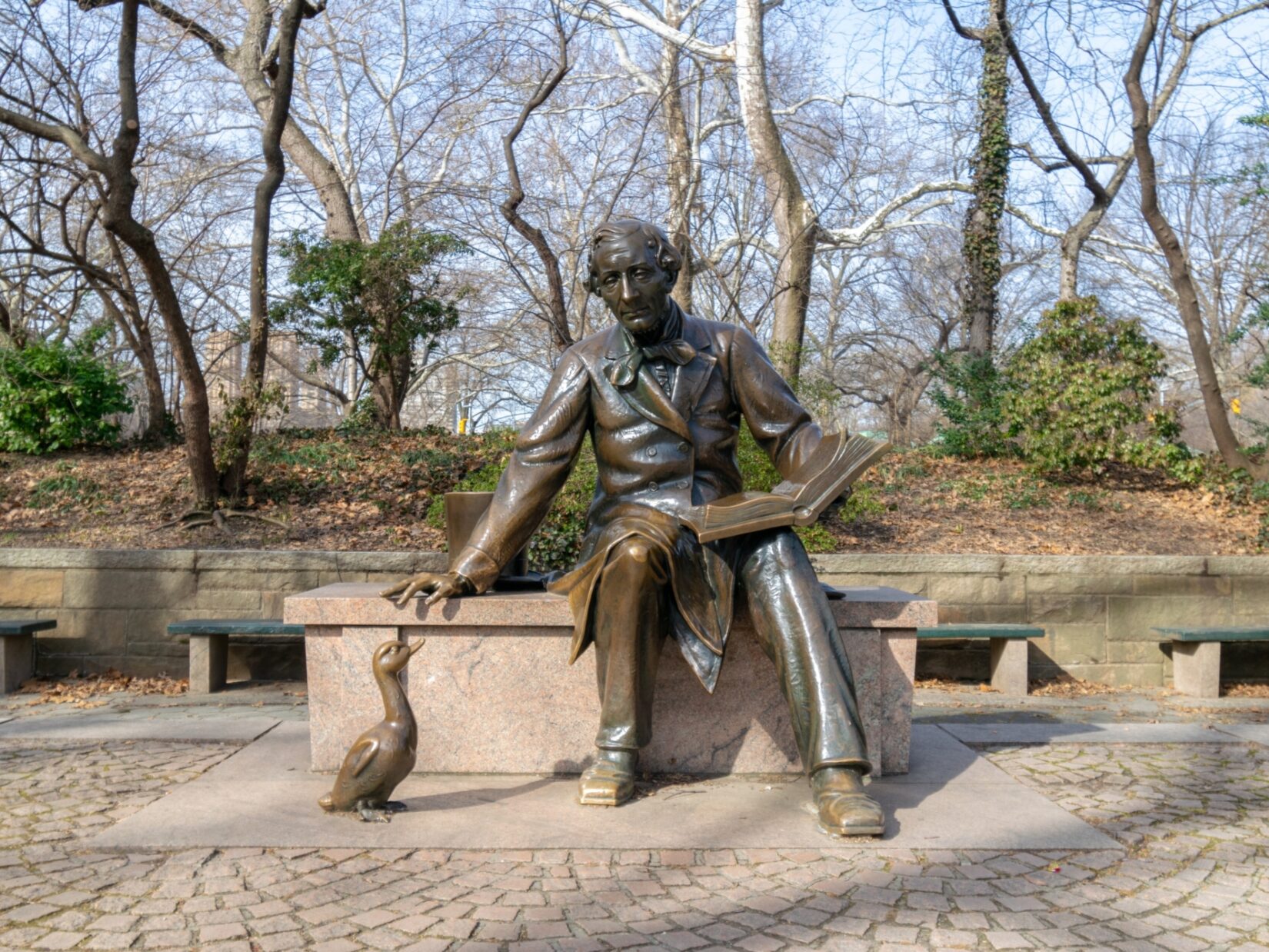The Pilgrim

On a hill near the East 72nd Street entrance stands The Pilgrim, a monument to the early Puritan settlers of New England. The bronze statue by the sculptor John Quincy Adams Ward depicts a man in 17th-century garb, including a steeple hat and riding boots, with his right hand resting on an upright musket.
Members of the New England Society of the City of New York formed a committee for the purpose of erecting a monument in 1879. The society was originally formed in 1805 to commemorate the landing of the Pilgrims at Plymouth Rock in Massachusetts. It planned a monument in Central Park to further honor this history and to establish the Puritans as foundational for American values such as personal liberty and heroic individualism as well as systems of commerce and politics. The figure of the Pilgrim is not a specific individual but rather an idealized Puritan man. The pedestal, designed by renowned architect Richard Morris Hunt, features bas-reliefs depicting various scenes and symbols associated with the Pilgrims: a bible and sword, the Mayflower, Native American weapons, and a globe surrounded by tools for navigation, an anvil, and a spool of wool.
The monument was unveiled in the Park on June 6, 1885. The ceremony included a parade and more than 3,000 spectators, including many politicians and civic leaders of New England descent. It is unclear why this area of the Park was selected for the monument, but today the hill is commonly referred to as Pilgrim Hill and is known for its cherry trees in the spring and as a popular spot for sledding in the winter.
The Pilgrim is one of four statues in Central Park by the important American sculptor John Quincy Adams Ward. His other works include Indian Hunter, the Seventh Regiment Memorial, and the monument to William Shakespeare.

